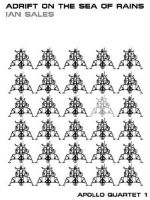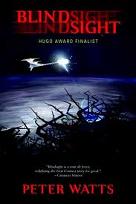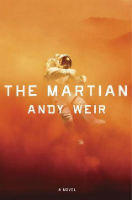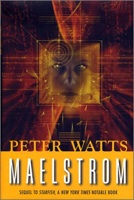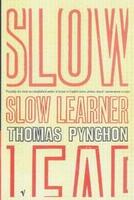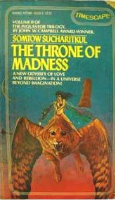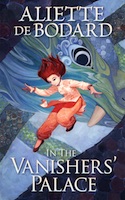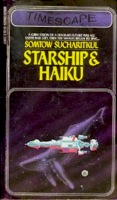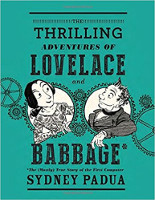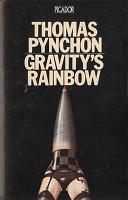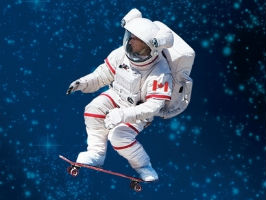 The December issue of Spaceflight reported from the 64th International Astronautical Congress:
The December issue of Spaceflight reported from the 64th International Astronautical Congress:
“In Beijing, the new WSW Executive Director Remo Timmermans got off to a flying start by securing the appearance of the world's most famous living astronaut, Buzz Aldrin. However, the BIS got extra kudos by arranging the world's second most famous astronaut, Chris Hadfield, to appear at a formal event the Society helped to organise […]”
And I think this about sums it up: Chris Hadfield is currently hot property, owing to his social media profile during his stint as Commander of a long-term mission to the International Space Station. An Astronaut’s Guide to Life on Earth is both the story of how he became an Astronaut against all odds, his adventures as an Astronaut, but especially what outlook on life got him there, and what he learned from the experience.
You haven’t heard of/from him? Let me summarise – Canadian Astronaut, part of the Shuttle crew who installed a docking adapter for said Shuttle on the Russian Mir station; then part of the team which installed the Canadarm2 on the ISS whilst it was being built, and now, as I said above, Commander on the ISS, with a huge presence on Twitter, Youtube, and G+. If you haven’t seen his version of David Bowie’s Space Oddity which he recorded on the ISS (yes, he’s an accomplished musician, too) then you should go and watch it now (link below, together with the bio from the book). I don’t know how long it will be until that song is Bowie’s again, in my mind… but he's good at this on his own, too:
“Behind us, a trail of burning snowflakes from the firing sparkle away into the night” – poetic, and he really should use this in a song, just in case he hasn’t done so yet.
The book comes in 4 parts – the first one is an Introduction called Mission Impossible, then 3 Parts titled Pre-Launch, Lift Off, and Coming Down to Earth.
This is interspersed with pictures of and by Chris, although his pictures of earth, taken from space, are too small in a book to do them justice. Go look at the gorgeous photos he’s posted on G+, or find them on the NASA pictures site.
The final part is an index of key words – very handy if you want to find a specific story, event, or topic again which he discussed.
Mission Impossible describes the story of how a 9 year old Canadian boy decides to become an Astronaut, and despite the chances for this coming to be being astronomically low and a gazillion ‘ifs’ standing against him, aligns his life’s choices and motivations with that target in mind. And flies into space 3 times.
“When we finally head outside to walk towards the big silver Astro van that will take us to the launch pad, it’s that moment everyone knowns: flashbulbs pop in the pre-dawn darkness, the crowd cheers, we wave and smile. In the van, we can see the rocket in the distance, lit up and shining, an obelisk. In reality, of course, it’s a 4.5-megaton bomb loaded with explosive fuel, which is why everyone else is driving away from it.”
His mantra from this is to measure every decision against the target of where you want to end up. And be prepared. Be over-prepared, just in case. And his approach to fear: knowledge and preparation, so you know what can happen, and what you can/need to do instead of freezing in terror. He also observes that, in contrast to common belief, Astronauts (like Jet pilots) are not thrill seekers; to the contrary, they tend to be off the scale in terms of being careful, prepared, and methodical.
This also leads him to the conclusion that it’s always worth to sweat the small stuff – because every detail counts if Billions of Dollars (and your life) depend on it. Not that I’m sure that this fully translate to mine or your life, mind…
On the risk of serious problems/disaster, and on preparing and training for those: “When you’re the author of your own fate, you don’t want to write a tragedy. Aside from anything else, the possibility of a sequel is non-existent.”
As you might gather, the book has a bit of a ‘self-help’ flair, on and off. Then again, I guess I asked for him to spread his wisdom, didn’t I, when picking up a book called “An Astronauts Guide to Life on Earth”…
There are loads of personal anecdotes and snippets from the long and improbable road to his 3 spells in space, usually to illustrate some point in his outlook on life. But besides the overall thrust of the book these are also genuinely entertaining, and frequently insightful in regards to Astronaut/Cosmonaut training, Space Agency politics, and life in these rarefied circles.
One thing which struck me as especially interesting and incongruous was his description of how training shapes highly competitive over-achievers into a highly proficient team, with members working to each other’s benefit.
Another thing which I had never even heard of was his explanation of the “Family Escorts” which NASA organises, where Astronauts currently not scheduled for a flight assist the families of those on the mission with the whole work and mess which comes with having a family member setting off for space. This can have very substantial ramifications – for his 2nd flight one of these Family Escorts for his family was Rick Husband, who, at a later point,r was the Commander for the ill-fates Columbia mission which disintegrated on re-entry, killing the crew. Being there for the family at this point is also part of being an Escort.
The book is steeped in classic Hadfield wit – for example, he describes Tom Marshburn and Roman Romanenko (his expedition crew on the ISS) as “the most easygoing and pleasant people on and off the planet”.
And his impression from the flight to Kazakhstan: “It looked exactly like the kind of place where a rocket could crash without inconveniencing anyone.” An ever so slightly backhanded compliment, I feel…
Hadfield, via the CSA, was/is a major asset for NASA, the ISS, and the general space programme due to his popularity, nah, notoriety on the Internet. He’s a great communicator of the mundane in, of the wonder of, and of the argument for space flight.
And to some extent this book is, of course, an extension of his outreach efforts – you see this when he describes the details of how life on a space stations works, the benefits of having/doing this, the experiments and their benefits; never mind the development and impact of the work on the ground.
On his new view of the Earth, and the quality of our stewardship for it: “This turns out to be one of the little-known aftereffects of space flight: I now pick gum wrappers up off the street.”
Can I recommend the book? Unless space flight leaves you entirely cold this is a must read.
Some Extra Material:
Space Oddity, Hadfield version, on Youtube
Biography from book, as promised:
Chris Hadfield is one of the most seasoned and accomplished astronauts in the world. The top graduate the US Air Force Test Pilot School in 1988 and US Navy test pilot of the year in 1991, Hadfield was selected by the Canadian Space Agency to be an astronaut in 1992. He was CAPCOM for 25 Shuttle launches and served as Director of NASA Operations in Star City, Russia;, from 2001-2003, and Chief of International Space Station Operations from 2006-2008. Hadfield most recently served as Commander of the International Space Station where, while conduction a record-setting number of scientific experiments and overseeing an emergency spacewalk, he gained worldwide acclaim for his breathtaking photographs and educational videos about life in space. His music video, a zero-gravity version of David Bowie's Space Oddity, received over 10 million views in its first three days online. Follow him on Twitter at @Cmdr_Hadfield.
Title: An Astronaut’s Guide to Life on Earth
Author: Chris Hadfield
Reviewer: Markus
Reviewer URL: http://thierstein.net
Publisher: MacMillan
Publisher URL: http://www.panmacmillan.com
Publication Date: 2013
Review Date: 140115
ISBN: 978 14472 57103
Pages: 295
Format: Hardback
Topic: Space Flight
Topic: Self Help
